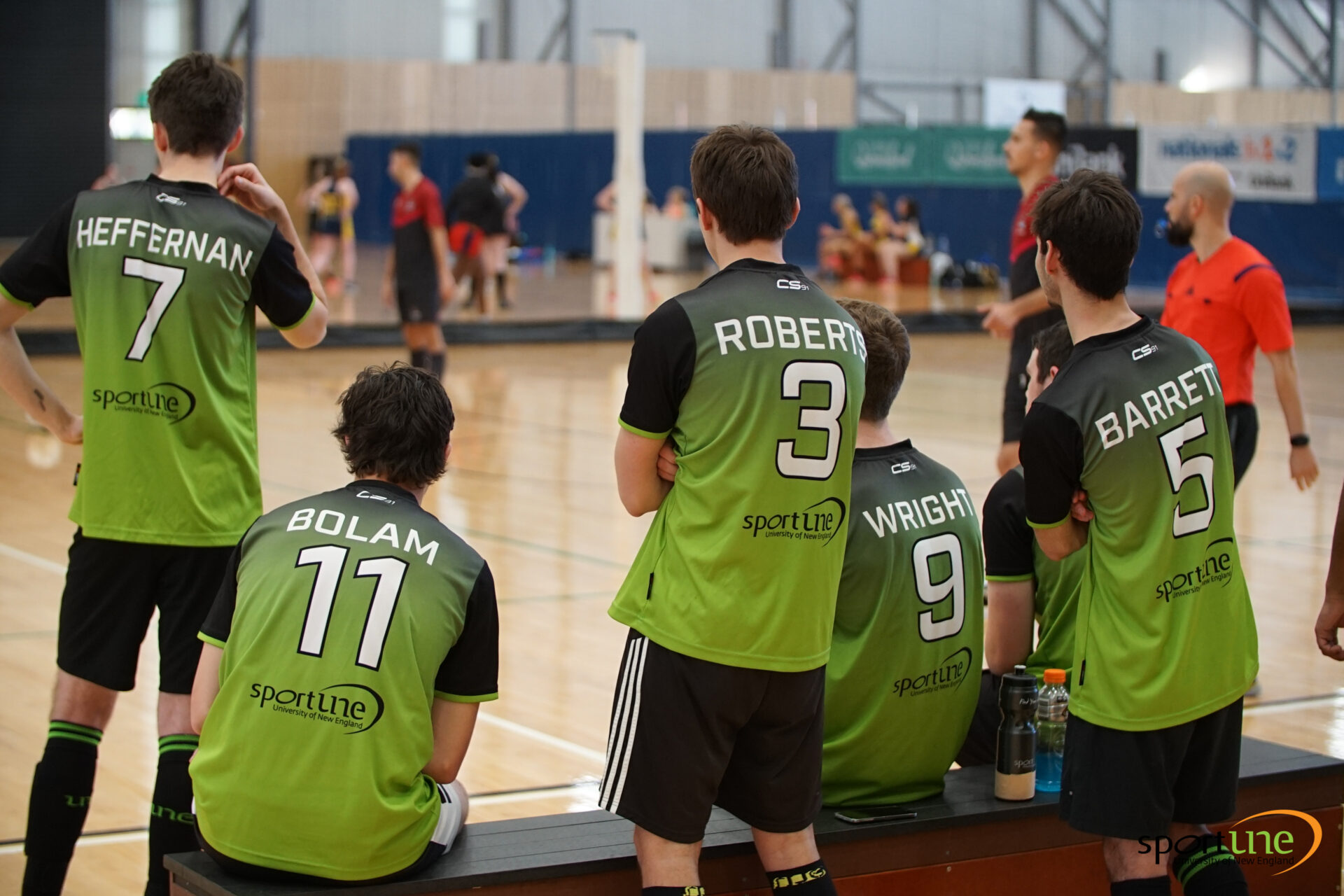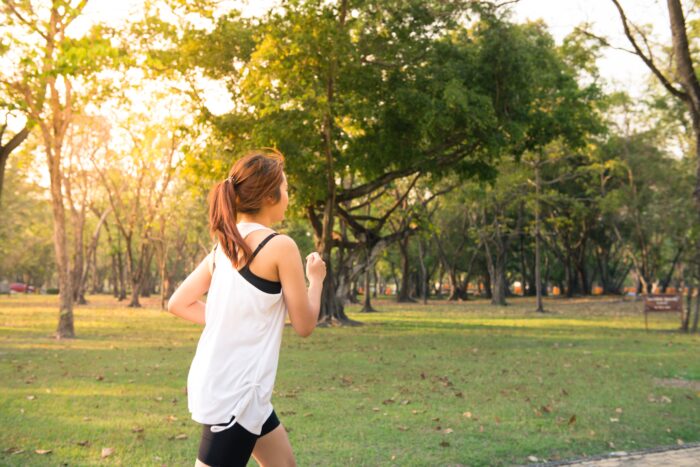
Physical Preparation Tips for Returning to Team Sport
Are you a regular winter team-sport participant? If so, I’m guessing that things have looked fairly different for you this season. No doubt you’ve been missing the regular competition & camaraderie provided by your sport. If you are anything like our members of the UNE Sports Academy, you have probably had to be a little bit creative with your exercise regimes. Maybe you have been training at home, creating your own home gym from whatever you have had lying around. Maybe you have taken up other activities like jogging and riding over longer distances than usual, and even set your goals on completing something like a half marathon or triathlon when the restrictions ease. On the flip side, many of you may have found it a little hard to get motivated without an end goal, which has resulted in an extended period of de-training.
With restrictions now starting to soften, the cogs of team sports competitions are starting to turn, and re-structured seasons are starting to take shape in many areas, including here in the New England.
Whatever your circumstances, there is a high probability that you haven’t been exposing your body to the normal demands of team sports training and competition. That now means that there is only a small window of time to physically prepare for the upcoming season, which may well include a condensed competition schedule, with more regular games and less time to recover or work your way into the season. All-in-all, this means your injury risk is likely higher, but also that the impact of an injury, given the shorter season, is much greater.
Some of you might argue, I’ve been doing cardio, three times a week, dropped some weight and feel pretty fit. However, the difference between a 5km run at a constant pace, and a chaotic game of team sport is quite dramatic. Here are a few specific components that you will likely have been missing:
- High speed running, including maximal sprints
- Acceleration and deceleration loading due to rapid changes in running speed
- Dynamic change of direction movements
- Unusual movements such as jumping & landing, twisting & turning, running backwards, getting up & down off the ground, etc.
- Body contact
- Sport-specific movements & skills
While this is not the forum to list every exercise possible for team sports, I’ve tried to include some ideas below that you may not have thought of. The idea being, that if you start introducing these types of exercises now into your weekly plan, it will help reduce the chance of injury and help you perform better when team sports training resumes, and real, fair-dinkum games start, once again.
Hip Conditioning
A really good place to start your physical prep for team sports is with some basic hip conditioning. The muscles around the hip, and especially the gluteus medius, is crucial for well-balanced, controlled movements in the hip & knee joints. And yes, they are important for injury prevention too! I recently put together a series of five different hip stability exercises which you can check out here.
Jumping & Landing Mechanics
Whatever land-based team sport you play, it’s basically impossible to avoid some form of jumping and landing. This creates unique forces and places the hip, knee, and ankle joints under high loads. For this reason, it’s a really good idea to practice to act of jumping and landing well under controlled conditions, before ‘jumping’ into the real thing.
A note of caution here though, don’t be tempted to overdo any of these jumping exercises as they place a high amount of stress on the body, and can contribute to overuse injuries. Go for quality over quantity – a maximum of about 10 repetitions for each exercise, once or twice a week, is plenty to start with, and progress gradually from there.
Line hops are a nice simple way to start this type of impact loading. Start doing them with two feet in both a forward-backward and lateral (side-to-side) orientation. Start slowly and build up your speed as you get used to it. Then you can move onto single leg line hops.
Jumping or bounding and landing in a controlled manner is a good next step for this type of training. Starting with a double leg broad jump, then moving to a single leg bound is the way to go. You should try to ‘stick’ the landing after each jump by dropping your hips. This lowers your centre of gravity and helps you maintain balance, but it also helps attenuate the impact load on your lower body, teaching you over time to jump & land in a safer manner. When you get confident with these types of exercises you can start trying to be more explosive with the jumping component, which also has a good training effect for lower body strength & power.
Introducing some basic plyometrics (repeated jumps or hops with quick contacts) into your training regime may also be a way of reducing injury risk, and improving performance. Try these stiff-legged hops to start with, firstly on the spot, then propelling yourself forward. For these, you are trying to maintain a stiff hip & knee joint, with most of the jump coming from the ankle joint, as well as the elastics properties of your muscles & tendons. You should be aiming for a combination of a maximal jump and quick contact time on the ground.
Running-Based Fitness
As pointed out above, it is time to change up those long steady pace runs, into something that is more specific to the demands of your sport.

For starters, try a fartlek session in place of your long runs. This is still a continuous run, but where you vary the running pace from hard to easy at regular intervals. The hard efforts should be faster than your normal continuous running pace, while the easy efforts should be slower. You can change pace based on time, or regular landmarks, and the shorter the effort the higher the intensity. Start with 5-to-10-minute bouts before taking a break to recover, so you can maintain the quality of your hard efforts.
Here’s some common examples:
- 20sec HARD, 40sec EASY
- 30sec HARD, 30sec EASY
- 10sec SPRINT, 20sec STRIDE, 30sec WALK
- Change pace as you pass a certain number of light poles, trees, fence posts, etc.
- Running laps of a standard rectangular field or court – run the long edge HARD & the short edge EASY (or vice versa)
High-speed stride throughs are a great way to work on your running technique, as well as getting the body used to running fast again. The hamstring strain is still by far the most common injury causing missed games in team sports, and these are a great way to build resilience in the hamstring musculature. The distance of the stride effort can be anywhere for 30 – 100 metres depending on your sport, and around 5-10 repetitions is a good sweet spot. But don’t fall into the trap of trying to break any land-speed records right from the start. Always aim to complete each rep with good running form, starting at 60-70% of maximal speed for the first session, giving yourself 30-60 seconds rest after each effort.
Repeated-sprint ability can be an overlooked fitness attribute for team sports. When you analyse team-sport match play, the key moments in many games revolve around players completing repeated maximal efforts in a short space of time. Therefore, improving your ability to resist fatigue and maintain the quality of your high-intensity efforts can give you some real x-factor when it comes to performance, but will also aid injury prevention.
Try these examples for starters:
Repeated 50m sprints
- Each run is at maximal effort
- Start each run on a 30sec cycle
- Vary starting positions – e.g. standing, on knees, on chest, facing away
- Start with 5 repetitions, and build up to 10 as you improve your fitness
300m Shuttle Runs
- Place markers at 0, 10, 20, 30, 40 & 50m
- Sprint from the 0 marker out to each cone and back in turn
- Total distance will be 300m – take a 1-2min rest and repeat
Malcolms
- Place markers at 0, 10 & 20m
- Start on your chest at the 10m marker
- Get up & sprint to the 20m marker, back to the 0m marker and finish on your chest back at the 10m marker
- Complete this four times, as fast as you can – take a 1-2min rest and repeat
Hopefully, this has given you some new ideas and inspiration to get back into the team sports mindset, and fingers and toes crossed for your season getting underway soon. Remember, these exercises definitely put some unique loads upon the body, so if you haven’t been doing anything like this for a while, progress slowly with both your intensity and volume at first. And as always, listen to your body, do some extra recovery or take a session off when you need it.
Good luck!
If you’re finding it hard to get back into the swing of things after lock down or just love tips and tricks for wellbeing chack out the Sportune Wellness Hub or connect with like-minded people in our Facebook group.


